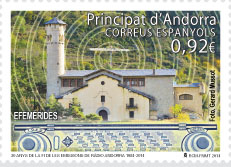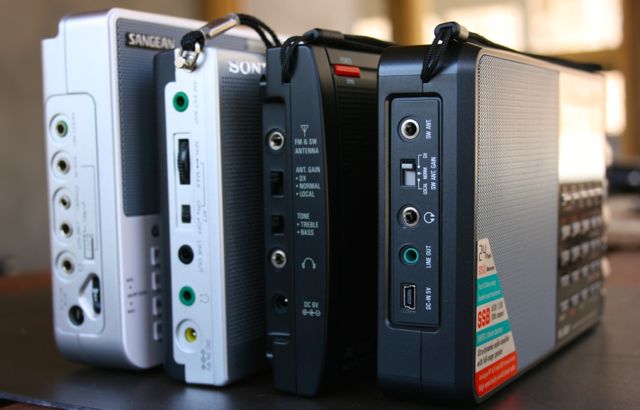STF Radio sent the following announcement for their “1-hour Million-Watt Special”:
Monthly Archives: April 2014
New feature on 2014 Tecsun PL-660
 Many thanks to my buddy, David Korchin (K2WNW), who noticed that Anon-Co is selling a new 2014 production run of the Tecsun PL-660, which includes an Auto Sorting Memory feature.
Many thanks to my buddy, David Korchin (K2WNW), who noticed that Anon-Co is selling a new 2014 production run of the Tecsun PL-660, which includes an Auto Sorting Memory feature.
 Anon-Co states that Auto Sorting Memory organizes all stored station memories automatically, removes duplicate stations and “sorts the sequence of stored stations.”
Anon-Co states that Auto Sorting Memory organizes all stored station memories automatically, removes duplicate stations and “sorts the sequence of stored stations.”
The new feature is enabled via the AM BW button.
Click here to view the new 2014 Tecsun PL-660 at Anon-Co.
UPDATE: Tom Stiles noted that his PL-660, purchased in September 2013, has this feature as well. I just confirmed my PL-660 (purchased around the same time and pictured above) has it too.
Shortwave.am: a new online frequency guide
 A few SWLing Post readers have recently recommended that I check out a new shortwave radio schedule site: shortwave.am.
A few SWLing Post readers have recently recommended that I check out a new shortwave radio schedule site: shortwave.am.
Shortwave.am has a unique layout that lists broadcast schedules along with a map that displays broadcast footprints (both short and long path).
Fortunately, I was able to get in touch with the site developer, Stephen Cooper, who frequently comments on the SWLing Post.
Stephen kindly answered a couple of questions I posed.
My first question was why, with the number of shortwave schedule sites on the Internet, he felt motivated to create a new site. Evidently, inspiration came from Stephen’s Android app, Shortwave Radio Schedules. He responds:
I first created the [Shortwave Radio Schedules] app to give me searchable listings on my phone which I found interfered much less with my radio than on my PC so I could turn my PC off and look at frequencies and schedules on a phone/tablet.
Since then I have just added extra features that I find useful, such as the ability to save logs including the station name, time, SINPO, a comment and a recording of the audio. I’ve used the app to then share my logs to Facebook groups, DXLD Yahoo Group etc. including the audio recordings made on the app.
The maps option I added because I had been using AOKI listings with the beam direction to try and work out favourable beam directions of broadcasts for me in the UK even if they were not targeted to Europe. I realised that it would be much easier to visualise this on a map and started looking at the Google Maps API to work out this would be possible on the app.
Once I added to the app I had noticed screenshots of the maps being posted on groups such as the Rally DX 2012 Facebook group’s and a few people who didn’t have Android asking if there was a web version. I looked into it and it wasn’t too hard to create shortwave.am after converting the Java code to PHP:and Javascript then the site was complete.”
When I asked Stephen what made his site differ from others, he responded:
“[I]t uses data from a combination of Eibi and AOKI to display the listings with maps showing the beam direction. It can also show estimate long paths of each broadcast and uses AJAX web technologies to show search results and maps without having to reload the page for each search or change of parameters.
[…]If you choose a station or language or both and click “Save” (next to the “Set Defaults” part of the site) it will set these as the default that will open each time you go to the site.
Also if you click on a transmitter it now shows all broadcasts coming from that transmitter.
[…]I am going to add some more of the features from the [Shortwave Radio Schedules] app such as the ability to add logging reports, view others reception reports from each station and the options to add recordings of a station and listen to others recordings.”
I think shortwave.am is fantastic, and I’m glad Stephen has put the time behind developing it in his spare time.
Stephen is eager to hear your comments, as he wishes to further develop the shortwave.am. Either post them here, or email Stephen directly.
BBC World Service features DRM
In this BBC World Service report, Mark Whittaker explores Digital Radio Mondiale (DRM) and, especially, its potential in India. Use the embedded player or link below to listen:
(Source: Audioboo via Tarmo Tanilsoo on Facebook)
 You’ll note the BBC World Service fails to mention that DRM has been in use now for over a decade.
You’ll note the BBC World Service fails to mention that DRM has been in use now for over a decade.
The report ends by suggesting that portable DRM receivers will be on the market in a few months. Even if DRM radios start appearing, whether or not they’ll be effective and inexpensive remains to be seen. So far, portable DRM radios have been mediocre performers (at best) and relatively expensive.
Don’t get me wrong: I would love to see DRM take hold, I just have my doubts. DRM might stand a chance if a manufacturer like Tecsun were to build an inexpensive portable radio, with a form factor much like that of their other portables. If they made a DRM version of the PL-380, for example, it could be a winner for both the company and the medium/mode.
By the way, if you’ve never heard what DRM sounds like over the shortwaves, I just posted a fifty eight minute recording of All India Radio on the Shortwave Radio Audio Archive. Contributor, Mark Fahey, recorded the broadcast from his home in Australia.
I’ve embedded a link to the audio below, but you can listen to the broadcast and read Mark’s notes on the shortwave archive (click here).
Radio Andorra Postage Stamp
 Many thanks to SWLing Post reader, Marty, who writes from Madrid:
Many thanks to SWLing Post reader, Marty, who writes from Madrid:
“Just wanted to let you know about an interesting postage stamp that was issued this month in the Principality of Andorra. Actually, the Spanish Post Office “Correos” issues the stamps for Andorra, and this one in particular observes the 30th anniversary of the cease in transmissions of Radio Andorra! Interesting stuff. Most other countries, the US Postal Service included, use to issue stamps in celebration of the anniversaries of the ongoing broadcasts of their international stations. I think this is the first time I have seen one that marks the closure. Here is the stamp 92 cents of a euro, mainly for international destinations. It was taken from a photograph by Gerard Massot.”
Click here to see this stamp on the Spanish Post Office (Correos) web site.
Air Force plans to decommission HAARP
HAARP (the High Frequency Active Auroral Research Program) in Alaska is now slated to be decommissioned as the US Air Force plans to “initiate divestiture in June 2014,” according to a USAF representative in this KTOO article.
HAARP was officially shut down in early May 2013–during a contractor “regime change“–but one of HAARP’s clients, DARPA (Defense Advanced Research Projects Agency), continued to use the facility for their research into 2014.
Unless someone steps up to pay HAARP’s expenses, the facility will be shut down.
Incidentally, HAARP has been the source of much speculation and conspiracy. A simple Google search for “HAARP” will reveal a number of theories.
Click here to read the full news article about the HAARP closure on KTOO.
Weak signals: Which radio do you prefer?
I’m in the process of reviewing a number of shortwave portables and pitting them against each other. Sometimes, it can be very difficult to decide which radio is better–especially if you have more than two radios to compare at a time.
What I’ll often do to help level the playing field is to make an in-line recording of each radio (via my Zoom H2N handy recorder) with the mic and volume levels equal. I then tune to the same frequency with similar filter settings (wide, maximum RX gain, antennas fully extended, etc.).
I also like comparing radios while listening to weak signals and/or when conditions are less favorable. Those were exactly the circumstances yesterday when I pitted four radios against each other: the Sangean ATS-909X, Tecsun PL-660, Tecsun PL-880 and the Sony ICF SW7600GR.
I found a weak signal from Radio Romania International on 11,975 kHz. Normally, the signal would have been stronger, but propagation was rough and QSB (fading) was pronounced at times. Under these conditions you get the opportunity to hear how the AGC circuit handles fading and troughs, how the noise floor sounds as conditions change and note the overall sensitivity.
While I give priority to a receiver’s sensitivity and selectivity, there’s more to evaluate–for example, sometimes the more sensitive radio may be less pleasing to listen to.
Below are three recordings of Radio Romania International made from three of the four radios tested (I did not include one of the four radios that was notably less sensitive). These are audio snapshots, but represent what a listener would hear via headphones during similar conditions. All recordings were made within a four minute period of time.
[Update: Check out the results of this test.]
Which of the three recordings do you prefer? Which radio do you find handles these unfavorable conditions best? Why do you prefer one over the others?
Please add your comment below, or contact me via email with your favorite and any comments. I’m also very interested in which one you believe is second best. I’ll tally up the results in one week and will reveal which radio came out on top!


